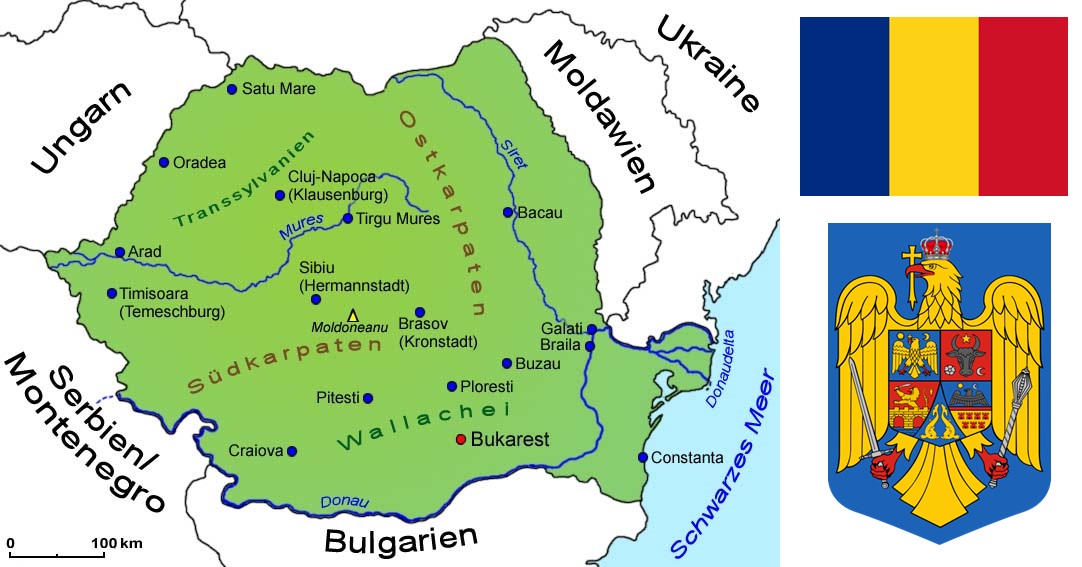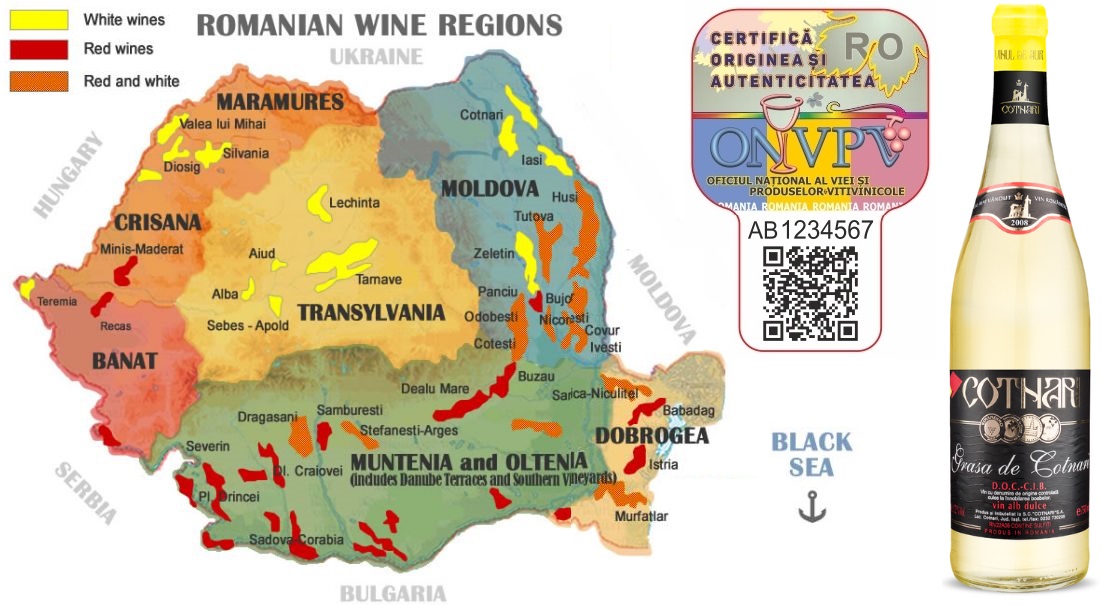Term for harvest/wine harvesting in connection with wine quality levels; see under Romania.
Romania
The Republic of Romania (România in Romanian, derived from the Latin Romanus) in south-east Europe with its capital Bucharest covers 238,397 km². The country lies on the Black Sea and stretches westwards across the Carpathian Arc to the Pannonian Plain. It borders Bulgaria to the south, Serbia and Hungary to the west and Ukraine and Moldova to the north and east. The state is divided into 41 counties (Județe) and the capital Bucharest.

History
With 6,000 years of wine history, Romania is one of the oldest and most traditional wine-growing countries in Europe. The Greek poet Homer already mentioned Thracian wines in his Iliad in the 8th century BC and the historian Herodotus (482-425 BC) tells of the wine trade of the Greek colonists on the Black Sea coast. German settlers from the Rhine-Moselle region followed the call of the Hungarian King Géza II (1130-1162), the ruler of this region at the time, and revitalised viticulture in Transylvania in the 12th century. In the 18th century, it was the Swabians who were brought into the country by the Habsburg ruler Maria Theresa (1717-1780). The historical landscape of Bessarabia, which today belongs to Moldavia, was mainly inhabited by Romanians at the beginning of the 19th century and belonged to Romania from 1917 to 1940.
Wine-growing regions
Romania belongs to the temperate climate zone and lies on the same latitude as France. Balanced rainfall, warm summers and long, dry autumns are ideal conditions for viticulture. However, the individual parts of the country differ climatically due to the natural barrier of the Carpathian Mountains. Transylvania west of the Carpathians is still characterised by the maritime climate of the Atlantic winds. However, the Carpathians prevent these from reaching the east and south of the country. Moldova (east of the Carpathians) is characterised by a continental climate with cold air currents from Ukraine. In Wallachia (south of the Carpathians) and Dobruja there are Mediterranean influences. The three most important regions are Moldova, Muntenia and Oltenia, where around 80% of Romanian wines are produced.
During the communist era, production was in the hands of the state. As a result of the political upheaval, a wave of privatisation set in from 1990 with many micro-owners. The leading production companies merged to form a private export distribution company. 487 wineries are registered as producers of authentic wines. A certification system for the origin and authenticity of wines enables traceability by means of a QR code (see centre image). There are 33 DOC/DOCC areas for quality wines or Prädikat wines(PDO = protected designation of origin) with 20,000 hectares and 12 IG areas for country wines(PGI = protected geographical indication) with around 6,500 hectares. The map shows the regions with their typical wine types. What Tokay is to Hungary, Cotnari is to Romania. This traditional wine was somewhat forgotten and has now been revitalised.

Banat
The region lies in the south-west of the country on the border with Serbia and Hungary. The wine-growing areas are Buzias-Silagiu, Dealul-Tirolului, Minis (known for its red wines from Cadarca and Cabernet Sauvignon), Moldova-Noua, Recas, Severinului and Teremia-Mare (known for its white wines from Riesling Italian = Welschriesling).
Crisana and Maramures
These two regions are located in the north-west on the borders with Hungary and Ukraine. The wine-growing areas are Diosig, Simleul-Silvaniei and Valea lui Mihai. Red and white wines.
Dobrogea (Dobrogea)
The region lies in the extreme south-east on the Black Sea and is bordered to the west by the Danube (Dunarea). The wine-growing areas are Istria-Babadag, Murfatlar, Ostrov and Sarica-Niculitel. In the sunniest climate in Romania with low rainfall, gentle red and rosé wines grow here.
Moldova (Moldavia)
The largest region with one third of the vineyard area is located east of the Carpathians in the east of the country on the border with Moldova and...
Voices of our members

Serious sources on the internet are rare - and Wine lexicon from wein.plus is one such source. When researching for my articles, I regularly consult the wein.plus encyclopaedia. There I get reliable and detailed information.
Thomas Götz
Weinberater, Weinblogger und Journalist; Schwendi